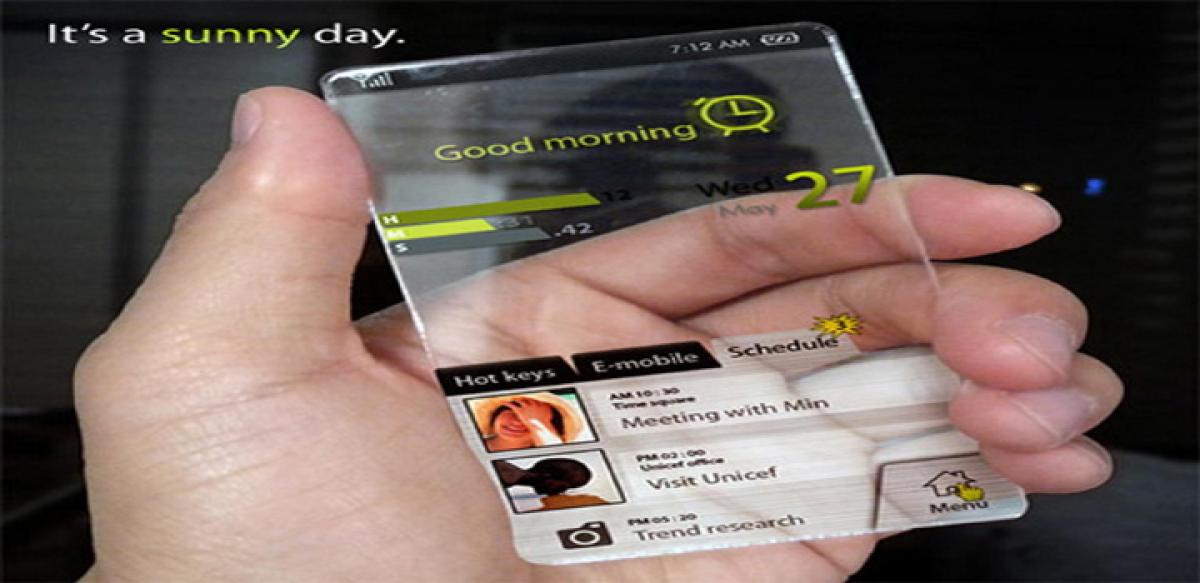Live
- Space X launches ISRO's communication satellite
- Sensex, Nifty rebound on value buying
- Eatala dares Revanth for debate on Cong 6Gs
- Modi strengthens global ties at Rio de Janeiro
- 55% share price fall costs Ola Electric investors Rs. 38K cr
- Banks report synchronised growth in credit, deposits
- PM Awas 2.0 launched
- Target Kohli’s body, his front pads to put him on back-foot: Healy’s advice to Oz quicks
- LIC accused of thrusting Hindi
- Will make Warangal a la Hyderabad
Just In

Researchers from the University of Missouri have developed a method of transferring an energy source to virtually any shape - a technology that can help develop new-age smartphones and other devices. Using an efficient laser-writing technique, scientists can help smartphone manufacturers potentially fabricate energy storage units like microbatteries and micro fuel cells that are more environmental
New York: Researchers from the University of Missouri have developed a method of transferring an energy source to virtually any shape - a technology that can help develop new-age smartphones and other devices. Using an efficient laser-writing technique, scientists can help smartphone manufacturers potentially fabricate energy storage units like microbatteries and micro fuel cells that are more environmentally friendly, highly designable and thin.
The direct laser writing (DLW) method and technique has seen a rapid advancement in the past decade. “The main goal of our research was to find an efficient and cost-effective way to integrate nanostructures with micro energy storage units for applications in micro-electronics,” said Jian Lin, assistant professor in the department of mechanical and aerospace engineering.
Lin and his team adapted the DLW method to synthesise and pattern hybrid nanocatalysts or fuel sources, into complex geometric shapes. Using computer-controlled laser writing that uses higher heat and pressure, the scientists were able to produce a surface that became electrically conducive and also has catalytic functionalities.
“This is the first step in manufacturing micro fuel cells that convert chemical energy into electrical energy and batteries that can integrate into microcircuits,” said Lin.This technique has been proven to produce microsupercapacitors. Manufacturers will now be able to choose more environmentally-friendly catalysts for generating energy such as hydrogen or oxygen, which are considered cleaner fuels. “The possibilities will be endless,” Lin noted in a paper published in the Journal of Materials Chemistry-A.

© 2024 Hyderabad Media House Limited/The Hans India. All rights reserved. Powered by hocalwire.com







